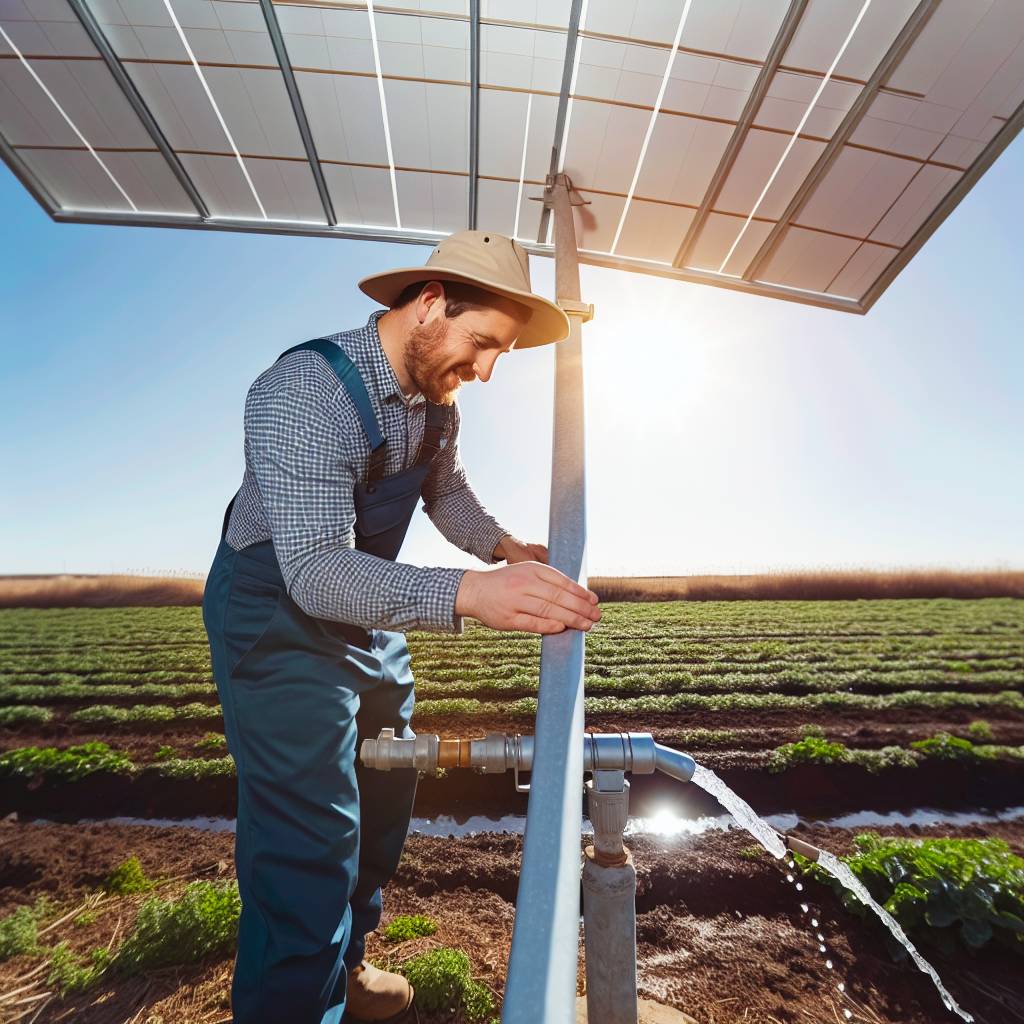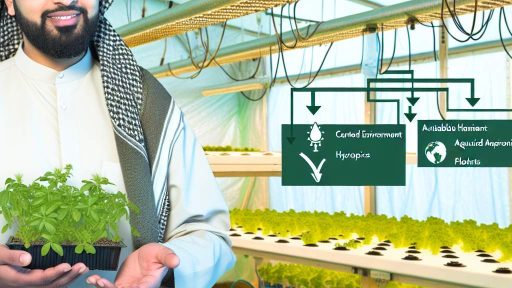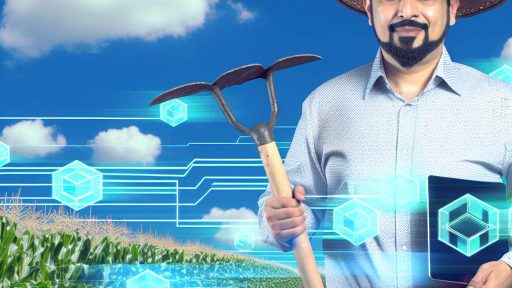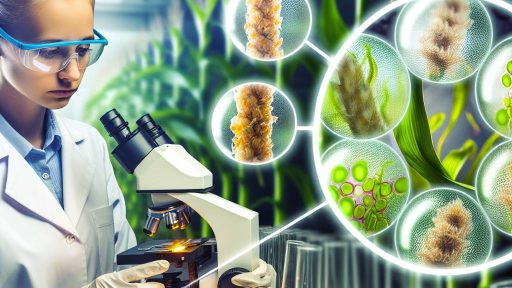Overview of Solar Irrigation
Definition of Solar Irrigation
Solar irrigation uses solar energy to power irrigation systems.
This technology harnesses sunlight to pump water for agricultural purposes.
It consists of solar panels, pumps, and irrigation systems.
Farmers can access water efficiently and sustainably.
Importance of Solar Irrigation
Water scarcity remains a global challenge.
Efficient water use is crucial for agricultural sustainability.
Solar irrigation reduces reliance on fossil fuels.
This method promotes environmental responsibility.
Moreover, it decreases operational costs for farmers.
Advantages of Solar Irrigation
- Enhances water efficiency in dry regions.
- Reduces electricity bills associated with traditional pumps.
- Promotes renewable energy use in agriculture.
- Fosters independence from grid electricity.
Challenges of Implementing Solar Irrigation
Initial costs can be a barrier for some farmers.
Additionally, maintenance knowledge is essential.
Access to quality solar equipment can vary.
Furthermore, geographic location affects efficiency.
Future of Solar Irrigation
The demand for sustainable farming solutions is on the rise.
Advancements in solar technology will improve efficiency.
Transform Your Agribusiness
Unlock your farm's potential with expert advice tailored to your needs. Get actionable steps that drive real results.
Get StartedGovernment support can enhance adoption rates among farmers.
Ultimately, solar irrigation has the potential to revolutionize farming practices globally.
Benefits of Solar Irrigation Solutions for Farmers
Cost Efficiency
Solar irrigation systems significantly reduce operational costs.
Farmers can save money on electricity bills and fuel costs.
Over time, these savings can enhance the overall profitability of the farm.
Environmental Impact
Utilizing solar energy reduces greenhouse gas emissions.
This transition helps combat climate change effectively.
Moreover, solar irrigation promotes sustainable farming practices.
Improved Water Management
Solar irrigation solutions allow for precise water application.
Farmers can better manage their water resources with advanced sensors.
This efficiency helps reduce water waste and ensures crops receive adequate moisture.
Increased Crop Yields
Access to reliable irrigation directly influences crop productivity.
Consistent watering schedules can lead to healthier plants.
As a result, farmers experience higher overall yields and better quality produce.
Energy Independence
Solar irrigation empowers farmers to harness renewable energy.
This independence from traditional energy sources enhances resilience.
Additionally, farmers can operate their systems without relying on local grid conditions.
Long-term Reliability
Solar irrigation systems typically require minimal maintenance.
High-quality solar panels can last for decades, ensuring lasting service.
Farmers can depend on this technology for many years to come.
Accessibility and Support
Government programs can help farmers adopt solar irrigation technology.
Financial incentives make these systems more accessible to small-scale farmers.
Furthermore, support networks can guide farmers in implementing these solutions.
Types of Solar Irrigation Systems: Passive vs Active Systems
Passive Solar Irrigation Systems
Passive solar irrigation systems utilize natural processes to manage water usage effectively.
Showcase Your Farming Business
Publish your professional farming services profile on our blog for a one-time fee of $200 and reach a dedicated audience of farmers and agribusiness owners.
Publish Your ProfileThese systems rely on simple design principles and minimal mechanical components.
They often include components like rainwater catchment and gravity-fed irrigation.
For instance, swales and ponds can help collect water for later use.
Furthermore, they require less maintenance compared to active systems.
This makes them ideal for small-scale farming or gardens.
Moreover, passive systems are often more cost-effective upfront.
Farmers can create sustainable patterns of water use and reduce dependency on pumps.
Active Solar Irrigation Systems
Active solar irrigation systems employ mechanical components to enhance water delivery.
These systems typically include solar panels, pumps, and automated controllers.
For example, solar-powered pumps can transport water from wells or reservoirs.
They allow users to irrigate larger areas more efficiently than passive systems.
Additionally, users can program these systems to operate on specific schedules.
This feature ensures optimal water delivery according to plant needs.
However, active systems may require higher initial investments for equipment.
They also necessitate ongoing maintenance for the mechanical components.
Yet, they can significantly increase water savings and crop yields in the long run.
Comparing the Two Systems
When choosing between the two systems, consider your specific needs.
Passive systems work best for those with limited resources or smaller plots of land.
Active systems suit larger farms needing efficient irrigation solutions.
Moreover, environmental factors play a crucial role in the decision-making process.
Assess your local climate and soil conditions before making a choice.
Ultimately, both systems contribute to sustainable water use in agriculture.
Farmers should evaluate their goals to determine the best approach.
You Might Also Like: Benefits Of Genetically Modified Crops For Modern Farmers
Key Components of Solar Irrigation Technology
Solar Panels
Solar panels convert sunlight into electricity effectively.
They are usually mounted on a rooftop or a ground-mounted system.
These panels harness energy for various irrigation components.
High-efficiency panels maximize energy output.
Water Pumps
Water pumps play a crucial role in solar irrigation systems.
They draw water from sources such as wells or rivers.
Solar pumps are designed to operate on solar energy directly.
These pumps significantly reduce electricity costs for farmers.
Moreover, they help in remote areas with limited power access.
Water Storage Systems
Water storage systems ensure a consistent water supply.
Tanks or reservoirs store water for use during dry periods.
These systems are often designed for easy maintenance.
Additionally, they often connect seamlessly with solar pumps.
Irrigation Controllers
Irrigation controllers automate the watering process effectively.
They optimize water usage based on soil moisture and weather conditions.
Advanced controllers offer remote monitoring and control.
Showcase Your Farming Business
Publish your professional farming services profile on our blog for a one-time fee of $200 and reach a dedicated audience of farmers and agribusiness owners.
Publish Your ProfileFarmers can set schedules and receive alerts through mobile apps.
Distribution Systems
Distribution systems are essential for delivering water efficiently.
Pipelines or hoses distribute water exactly where needed.
Drip irrigation and sprinklers improve water efficiency further.
These systems minimize wastage and ensure targeted watering.
Integration with Other Systems
Integrating solar irrigation with other technologies enhances efficiency.
For instance, precision agriculture tools complement irrigation systems.
Data analytics can monitor usage and optimize resource allocation.
This integration leads to better crop yields and reduced costs.
Find Out More: IoT-Driven Data Analytics for Farm Productivity
Case Studies: Successful Implementation of Solar Irrigation
Solar Solutions in Rural India
Agricultural communities in India have embraced solar irrigation successfully.
Farmers like Anil Kumar reduced their dependency on diesel pumps.
This shift lowered operational costs significantly.
Moreover, solar systems provided a reliable water source throughout the year.
Consequently, crop yields improved due to consistent irrigation.
This case highlights the potential of renewable energy in agriculture.
Innovative Practices in Southern Africa
In Southern Africa, farmers have adopted solar-powered drip irrigation.
Farmer groups, such as the Green Fields Cooperative, showcase impressive results.
They optimized water usage while enhancing crop quality and quantity.
The cooperative’s approach minimized waste and increased efficiency.
In addition, community training programs ensured sustainable operation.
Such collaborative efforts empower local farmers to thrive.
Successful Projects in California
California’s Central Valley features several successful solar irrigation projects.
Innovators like SunHarvest Technology provide affordable solar solutions.
Farmers can monitor water use in real time, optimizing spray schedules.
This technology addresses water scarcity challenges effectively.
Consequently, crops maintain health even during drought conditions.
California continues to lead in sustainable farming practices.
Learn More: Drones For Efficient Irrigation Management In Farming

Challenges and Limitations of Solar Irrigation Solutions
Initial Cost Barriers
Investing in solar irrigation systems involves a significant initial cost.
Many farmers face budget constraints that hinder adoption.
Even though long-term savings are possible, the upfront expenses remain daunting.
Government subsidies can help alleviate some financial burdens.
Technological Complexity
Solar irrigation systems can be complex to install and operate.
Farmers may require specialized training to use these systems effectively.
Technical support and maintenance are essential for optimal performance.
Reliable service providers are necessary to ensure ongoing functionality.
Weather Dependency
Solar energy production is inherently dependent on weather conditions.
Regions with inconsistent sunlight may struggle to maintain regular irrigation.
This variability can lead to uncertainties in crop management strategies.
Showcase Your Farming Business
Publish your professional farming services profile on our blog for a one-time fee of $200 and reach a dedicated audience of farmers and agribusiness owners.
Publish Your ProfileBackup systems may be needed to ensure reliable water supply.
Land Size and Layout Limitations
The effectiveness of solar irrigation can vary based on land size and layout.
Smaller farms may not achieve the same efficiencies as larger operations.
Site constraints can impact the optimal placement of solar panels.
Proper planning is crucial to maximize energy collection and water distribution.
Environmental Impact Considerations
While solar energy is environmentally friendly, installation can disrupt local ecosystems.
Impact assessments should be conducted prior to installation.
Farmers must balance productivity with environmental preservation.
Long-term ecological effects should be considered throughout the planning process.
Integration with Existing Systems
Integrating solar irrigation with existing systems can be challenging.
Compatibility issues may arise with older water management solutions.
Therefore, careful evaluation of current infrastructure is necessary.
A seamless integration process can enhance overall efficiency.
Learn More: Precision Irrigation Systems Enhancing Sustainable Farm Practices
Government Policies and Incentives Supporting Solar Irrigation
Introduction to Solar Irrigation Policies
Government policies play a pivotal role in promoting solar irrigation solutions.
These policies aim to enhance water efficiency in agriculture.
Incentives make it easier for farmers to adopt renewable technologies.
Subsidies and Grants for Solar Technologies
Many governments offer subsidies to facilitate the installation of solar irrigation systems.
For instance, the U.S. Department of Agriculture provides grants for renewable energy projects.
These financial aids encourage farmers to shift to solar-powered systems.
Tax Incentives for Solar Investments
Tax credits significantly reduce the cost of solar installations.
In various regions, farmers can receive tax deductions on their solar purchases.
This financial relief incentivizes more farmers to invest in solar irrigation technologies.
Regulatory Support and Simplified Approval Processes
Streamlined regulations expedite the adoption of solar irrigation technologies.
Governments are reviewing approval processes to eliminate unnecessary bureaucracy.
Such support helps farmers implement solar solutions more efficiently.
Training and Education Programs
Training programs are essential for educating farmers on solar technologies.
Various organizations offer workshops to demonstrate solar system benefits.
Moreover, farmers gain insights into efficient water management practices.
Partnerships with Private Enterprises
Public-private partnerships boost the development of solar irrigation solutions.
These collaborations facilitate innovative financing options for farmers.
In doing so, they enhance the availability of solar technologies.
Long-Term Environmental Goals
Government incentives align with environmental sustainability goals.
By promoting solar irrigation, they help reduce carbon footprints.
This strategy contributes to global efforts against climate change.
Future Trends in Solar Irrigation Technology and Its Impact on Agriculture
Advancements in Solar Technology
Innovations in solar technology are transforming irrigation methods.
Solar panels are becoming more efficient and affordable.
This trend supports widespread adoption in agriculture.
Farmers can now harness solar energy effectively.
Emerging technologies improve water management practices.
Showcase Your Farming Business
Publish your professional farming services profile on our blog for a one-time fee of $200 and reach a dedicated audience of farmers and agribusiness owners.
Publish Your ProfileIntegration of Smart Irrigation Systems
Smart irrigation integrates technology to optimize water use.
Meteorological data drives more accurate watering schedules.
Farmers benefit from decreased water waste and lower costs.
Remote monitoring facilitates efficient system management.
Additionally, these systems enhance crop yields significantly.
Environmental and Economic Benefits
Solar irrigation contributes to environmental sustainability.
It reduces dependency on fossil fuels for irrigation.
Farmers experience lower operational costs over time.
Moreover, solar energy creates new job opportunities.
This shift supports rural economic growth.
Challenges and Solutions
While promising, solar irrigation faces challenges.
Initial setup costs can deter some farmers.
Access to technology remains an issue in rural areas.
However, government incentives can mitigate these barriers.
Partnerships with tech companies offer viable solutions.
Future Outlook
The future of solar irrigation looks bright and promising.
Increased investment will drive further advancements.
As technology improves, more farmers will adopt these systems.
Consequently, sustainable water practices will proliferate.
Ultimately, solar irrigation can redefine agricultural productivity.
Additional Resources
Smart Irrigation: How High-Tech Watering Systems are Changing …
The 5 Cs of Agrivoltaic Success Factors in the United States …




